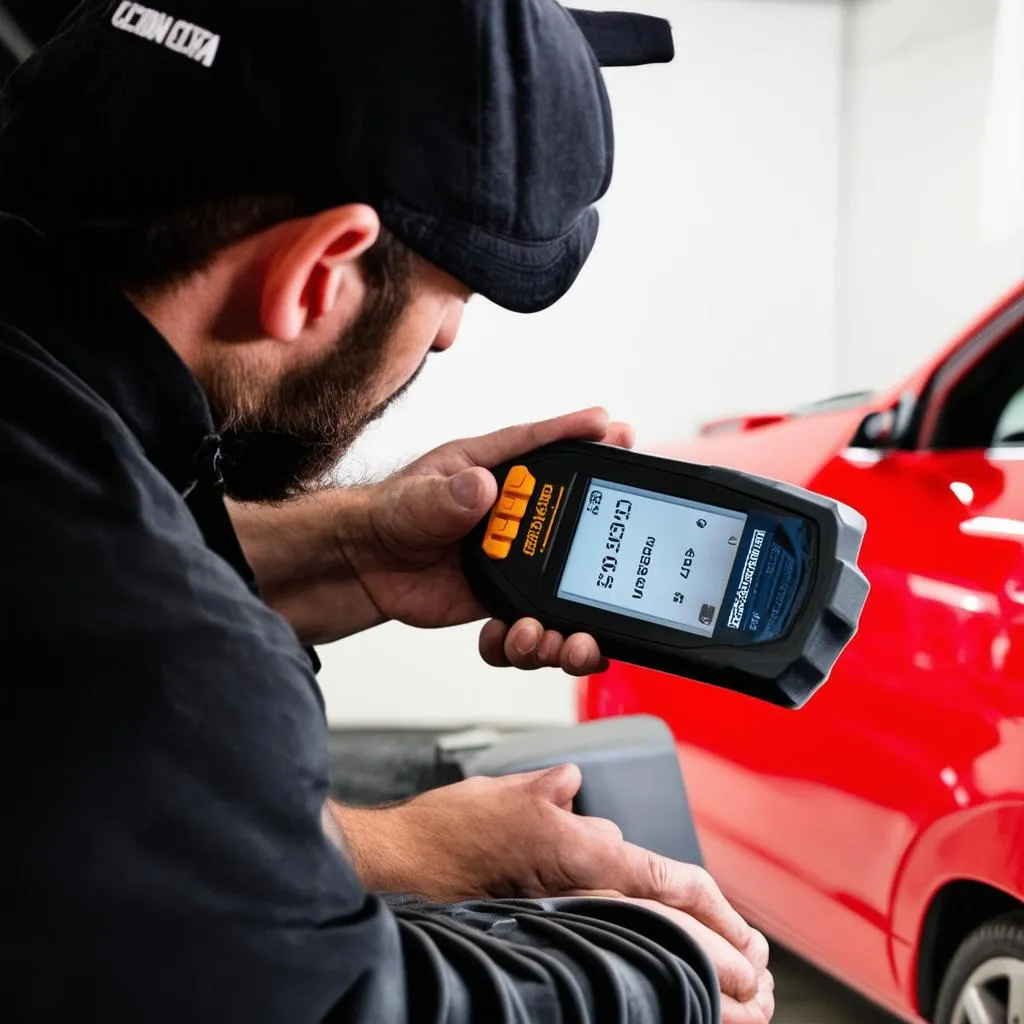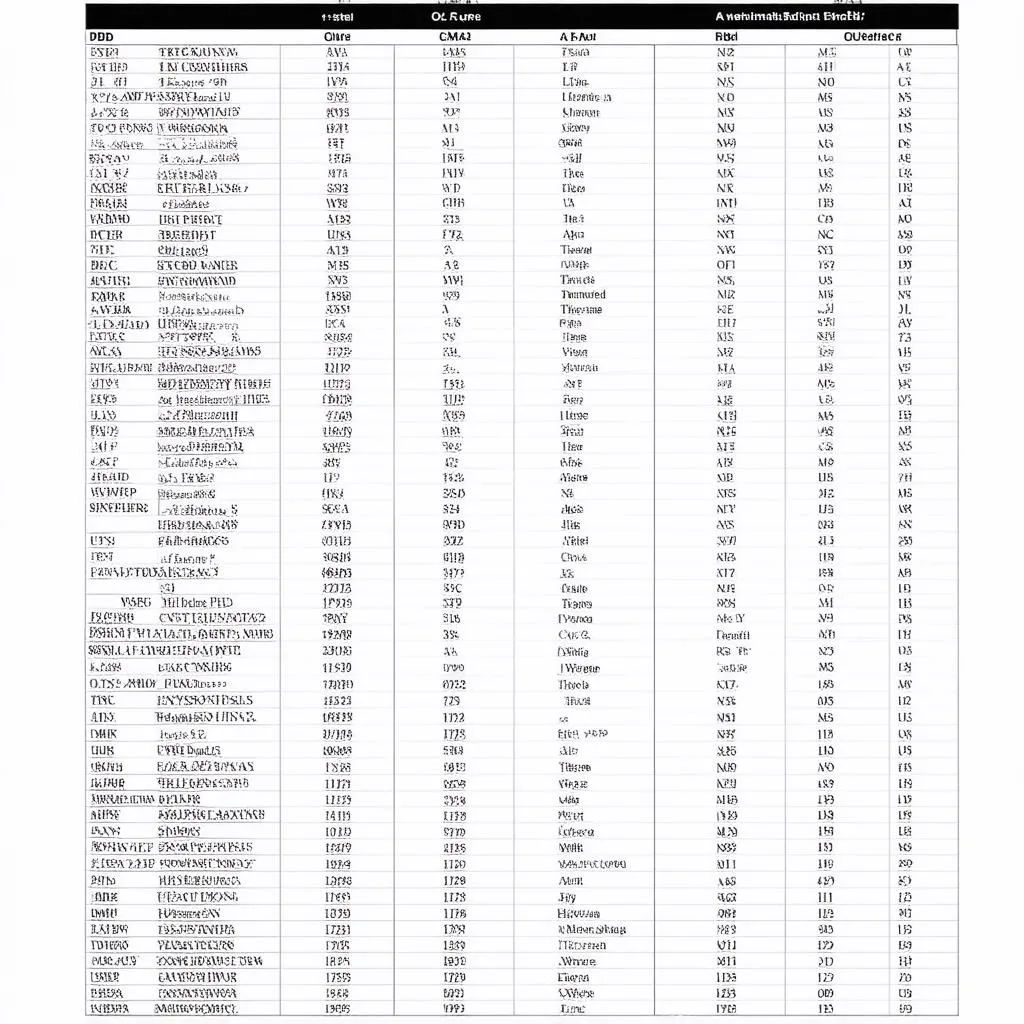Ever wondered why your 2003 Toyota Corolla S is acting up? You’re not alone! This trusty car has been a popular choice for years, but even the most reliable vehicles can encounter issues. One of the first steps to understanding what’s going on is to check the OBD codes. These are diagnostic codes stored in the car’s computer, providing valuable insight into what’s wrong.
Understanding OBD Codes: Unlocking the Secrets of Your Car
OBD codes are like a secret language your car uses to communicate with you. They tell you about various issues within the car’s electrical system and other components. Understanding these codes can help you pinpoint the problem and potentially save you time and money on repairs.
Why are OBD Codes Important?
Let’s imagine your Corolla S starts acting strangely. It might be sluggish, have a flashing light on the dashboard, or even refuse to start. Instead of guessing, checking the OBD codes gives you a clear picture of what’s happening.
- Diagnosis: Think of them as a doctor’s diagnosis for your car.
- Troubleshooting: You can begin the troubleshooting process by knowing what the code is telling you.
- Repair cost estimation: Knowing the code can help you estimate the potential repair cost, making sure you’re not being overcharged.
How to Read OBD Codes: The Decoder Ring for Your Car
Reading OBD codes involves using a device called an OBD2 scanner. The good news is that most auto parts stores will have these scanners available for rent.
- Connect the Scanner: The OBD2 port in your 2003 Corolla S is typically located under the dash, near the steering column.
- Retrieve the Codes: Connect the scanner to the port and follow the instructions to retrieve the codes.
- Decoding: Most scanners will provide a definition of the code, explaining the possible issues. You can also find online resources that explain OBD codes in more detail.
Common 2003 Toyota Corolla S Obd Codes: Deciphering the Messages
Here are some common OBD codes you might encounter on your 2003 Toyota Corolla S:
- P0171 – System Too Lean (Bank 1) – This indicates a problem with the fuel-air mixture, potentially due to a faulty oxygen sensor, air leak, or clogged fuel injector.
- P0300 – Random/Multiple Cylinder Misfire Detected – A misfire is when one or more cylinders are not firing properly. This could be due to faulty spark plugs, ignition coils, or a fuel delivery issue.
- P0420 – Catalyst System Efficiency Below Threshold (Bank 1) – This indicates a problem with the catalytic converter, which could be caused by a faulty oxygen sensor, clogged converter, or a fuel-air mixture issue.
- P0135 – Oxygen Sensor Heater Circuit Malfunction (Bank 1, Sensor 1) – This is a common code that indicates a problem with the oxygen sensor, which is responsible for measuring the amount of oxygen in the exhaust.
- P0123 – Throttle Position Sensor (TPS) Circuit High Input – This code indicates a problem with the TPS, which is responsible for telling the engine how much throttle the driver is using.
 2003 toyota corolla s obd scanner
2003 toyota corolla s obd scanner
Troubleshooting OBD Codes: The DIY Approach
While it’s best to take your car to a qualified mechanic for complex repairs, you can perform some basic troubleshooting steps using the OBD codes as your guide.
- Check for Obvious Problems: Start by visually inspecting the engine for any obvious signs of problems, such as loose wiring, damaged hoses, or leaking fluids.
- Replace Sensors: If the codes point to a faulty sensor, replace the sensor with a new one. You can find these sensors at most auto parts stores.
- Clean Fuel Injectors: If the code suggests a fuel injector problem, try cleaning the injectors with a fuel injector cleaner.
Remember: If you’re not comfortable working on your car, it’s best to take it to a qualified mechanic.
Where to Find More Information: Your OBD Code Journey
- Online Resources: Websites like www.obd-codes.com offer extensive information about OBD codes, including definitions, troubleshooting steps, and potential solutions.
- Owner’s Manual: Your 2003 Toyota Corolla S owner’s manual might also include some basic information about OBD codes.
- Mechanics: Don’t hesitate to ask a trusted mechanic for assistance.
 obd code chart
obd code chart
FAQs: Addressing Your Burning Questions
- Can I Clear OBD Codes Myself? Yes, most OBD scanners can clear the codes. However, this does not necessarily mean the problem has been solved. It simply clears the code from the car’s memory. If the problem persists, the code will likely reappear.
- Should I Be Worried About Certain Codes? Some codes are more serious than others. For example, a code related to the engine control system is likely more serious than a code related to the air conditioning system.
- How Often Should I Check My OBD Codes? It’s a good idea to check the codes every few months, especially if you notice any changes in your car’s performance.
Beyond OBD Codes: A Holistic Approach to Car Health
While OBD codes are crucial for diagnosis, remember that they’re just one part of a larger picture.
- Regular Maintenance: Following a regular maintenance schedule, including oil changes, air filter replacement, and brake inspections, can help prevent many car problems.
- Intuitive Driving: Be mindful of how you drive. Aggressive driving habits can lead to wear and tear on your car.
- Feng Shui and the Car: It may seem unusual, but some believe that maintaining a clean and organized car can improve its energy flow and overall health.
 car maintenance
car maintenance
Get Expert Assistance: Your Car’s Wellbeing is Our Priority
If you’re facing a stubborn OBD code or need help with any other car issues, TechCarUSA is here to help. We offer expert diagnostics, repairs, and maintenance services for all European cars.
Connect with us via Whatsapp: +84767531508 for prompt assistance.
Let us help you keep your 2003 Toyota Corolla S running smoothly for many miles to come.
What are some other car issues you’re facing? Share your questions in the comments below!